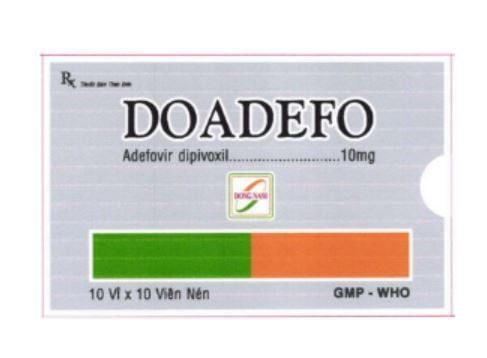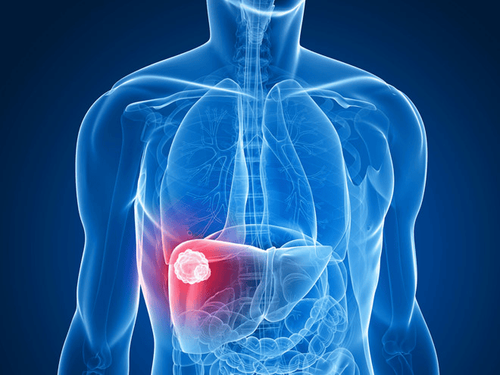This is an automatically translated article.
Hepatoblastoma is a primary malignancy that originates in the liver. Hepatoblastoma cells can spread to other areas of the body.1. Causes of hepatoblastoma
Hepatoblastoma is a malignant liver tumor that mainly occurs in children under 5 years of age. To date, the cause of hepatoblastoma remains unknown. However, the disease tends to increase with the severity of liver infections, especially if a woman has hepatitis B during pregnancy.Several other related conditions may increase the risk of developing hepatoblastoma:
Beckwith-Wiedemann syndrome, Wilson's disease, late acquired Porphyria and familial polyposis. Genetic status: Congenital defects of metabolism such as tyrosinemia, glycogen storage disease or Alpha1-antitrypsin deficiency. Children are exposed to hepatitis B or hepatitis C at an early age. People with biliary atresia are also at increased risk of developing hepatocellular carcinoma. Genetic problems: Some hepatoblastomas have a change in a tumor suppressor gene. That explains the uncontrolled cell proliferation.
Trắc nghiệm: Làm thế nào để bảo vệ lá gan khỏe mạnh?
Làm test trắc nghiệm kiểm tra hiểu biết về gan có thể giúp bạn nhận thức rõ vai trò quan trọng của gan, từ đó có các biện pháp bảo vệ gan để phòng ngừa bệnh tật.2. Symptoms of hepatoblastoma
The clinical symptoms of hepatoblastoma are very poor with the common manifestations in cancer being a raised abdominal mass, possibly with abdominal pain and other symptoms such as digestive disturbances, weight loss. poor appetite, nausea and vomiting.Some other symptoms: Nausea and vomiting Jaundice (yellowing of the skin and eyes) Fever, itching Varicose veins on the abdomen are visible on the skin These symptoms develop silently so in the early stages it is often difficult to detect . Patients often arrive at the hospital late or are fortunately detected earlier due to other medical examinations or general physical examination.
Today, with the advancement of science, early diagnosis and timely treatment of malignant liver diseases, including hepatoblastoma, with appropriate combined treatment methods, can be completely cured

Nôn, buồn nôn là một trong những triệu chứng của u gan nguyên bào bạn cần lưu ý
3. What are the different stages of liver cancer in children?
At different stages, the spread as well as the outward symptoms of malignant liver tumors are also different. Hepatoblastoma includes stages:Stage I − usually a tumor confined to the liver, which can be completely removed by surgery; Stage II − usually a tumor that has been removed surgically but a small amount of cancer remains; Stage III − usually a tumor is completely removed or cancer cells are found in nearby lymph nodes; Stage IV − cancer has spread (metastasized) to other parts of the body; Recurrence – the disease comes back after it has been treated. It can recur in the liver or in another part of the body.
4. Diagnosis of hepatoblastoma
In addition to a complete history and physical examination, diagnostic tools for hepatoblastoma may include:Liver biopsy Complete blood count (CBC) Other blood tests: Blood chemistry, coagulation tests, assessment of liver and kidney function and genetic tests Computerized tomography (CT Scan) Magnetic resonance imaging (MRI) X-ray Ultrasound Quantitative alpha-fetoprotein (AFP) blood levels: May be used used to diagnose and monitor response to treatment
5. Treatment of hepatoblastoma

Điều trị u nguyên bào gan nói chung nhằm mục đích loại bỏ càng nhiều khối u càng tốt trong khi duy trì chức năng gan đầy đủ
Surgery (to remove the tumor and part or all of the liver) Chemotherapy Liver transplantation Radiation Therapy Percutaneous ethanol injection −a fine needle used to inject ethanol into a tumor to kill cancer cells Watch carefully - do not start treatment until symptoms appear or change Treatment effectiveness and a child's survival Having hepatoblastoma depends very much on the extent of the disease when it is detected and treated, the size and location of the tumor, whether the tumor has metastasized or not, the child's response to treatment... Therefore Parents should take their children to the doctor immediately to detect the disease early, if any, the treatment will be easier and more effective.
The Hepatobiliary Screening Package implemented by Vinmec International General Hospital will check, monitor and evaluate your liver health status on your behalf. With a team of doctors who are highly qualified and experienced experts, with the support of advanced machinery systems, professional services, customers when participating in the package will enjoy medical benefits. The best health care, comprehensive protection of liver and gallbladder health for yourself and your loved ones.
Please dial HOTLINE for more information or register for an appointment HERE. Download MyVinmec app to make appointments faster and to manage your bookings easily.













